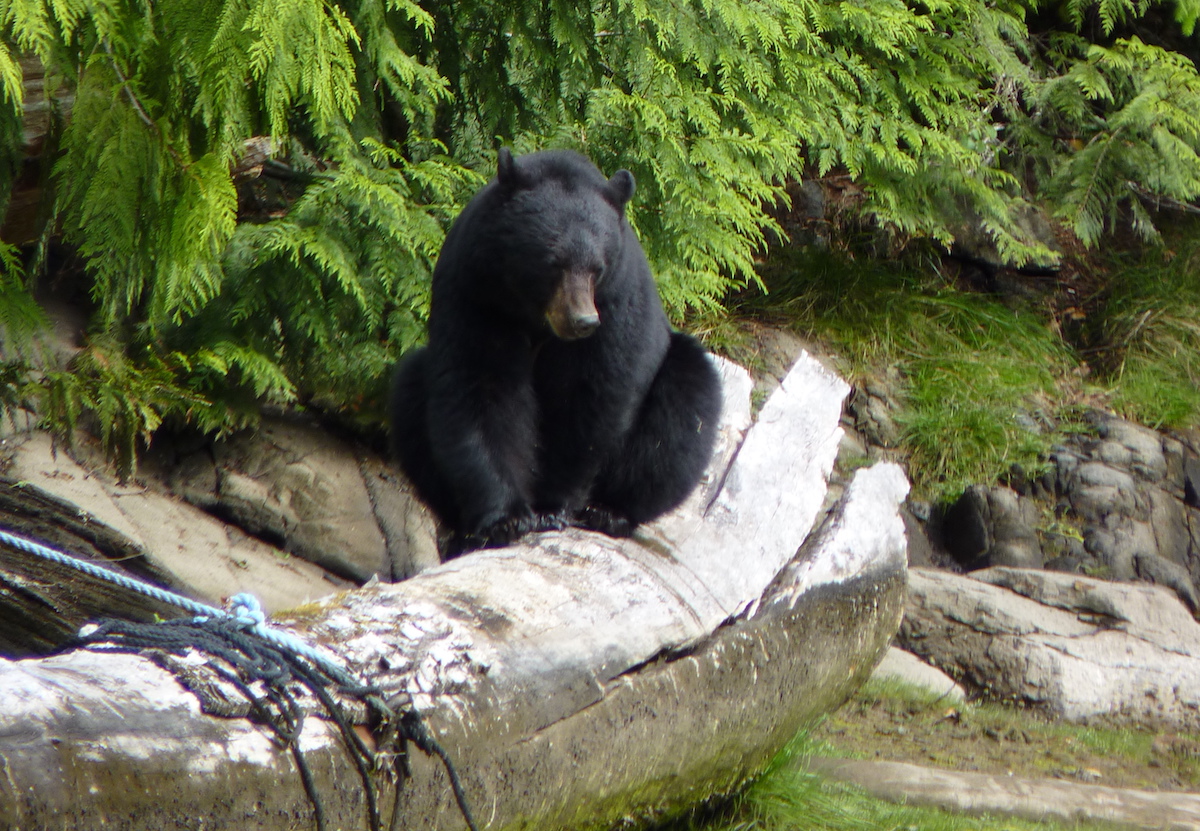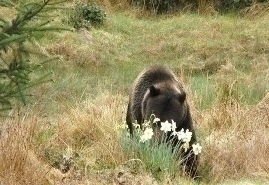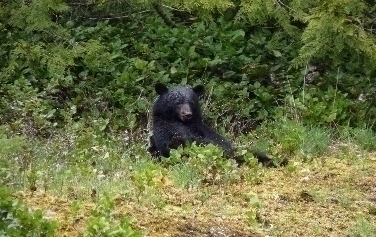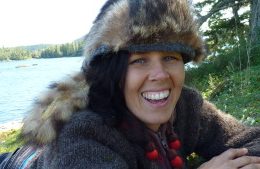Talking with Grizzly Bears Part 2 – by Daisy Crocket

We’re grateful to the amazing Nikki van Schyndel (aka Daisy Crocket) for sharing some of her life and adventures with us here on Outdoor Revival.
The Art of Invisibility and Shape-shifting
The first time a deer sniffed my nose was because I finally learned the art of invisibility and stillness.
But what happens when the animal you are hiding on realizes you’re actually not a stump? At this point you have to become a shapeshifter…
Let’s first review the art of Invisibility:
- Get as comfortable as possible and break up your form with the landscape – have your arm wrapped along a branch, your leg mimicking a tree root, leaves scattered on your lap… Beware if you have ferns or branches sticking up in your hair if you cannot follow #2.
- Don’t move…EVER! Not when a mosquito lands on your face or your nose itches. If you have to move your leg because it’s tingling at a pain level of 7 and you’re considering the idea that you may actually lose your limb when you stand up again, definitely move at a pace the eye cannot detect.
- Becoming invisible is far more about camouflaging your mind than the color of your clothes – still your chatty thoughts, ignore your doubts and stop sending out waves of fearful imagery.
- Switch from a focussed vision to a softened, wide-angle vision and concentrate solely on heightening your awareness. If you fully engage your senses your thoughts will disappear as well. And believe me; animals hear your thoughts.
- Relax and breathe into your surroundings. Practice not being a human. Imagine with all your being you are that stump or tree and KNOW you are.

So you blew it…just when the bear began walking towards you a super-charged memory of Timothy Treadwell – the man who was eaten by a grizzly – flashed to the forefront of your memory and you raised your hand and called out, “Hi Bear! The sabotage of fear begins.
- Definitely don’t go back to being a stump, the game is over. Start moving very slowly so you don’t you become a “suspicious” human or the animal will say to itself, “Why isn’t that human moving…they’re always moving. Why would it freeze? Should I be scared too?”
- Pause in your movements, slowly look around, listen and test the air with your nose like a bear.
- Depending on the situation I often start grazing and imagine myself becoming an animal. When meeting a deer I always become another deer. Move a few steps, pick a leaf, nibble…If you don’t know what’s edible just pretend to eat something. You will suddenly become another grazer of the forest and that often says, “I’m not threatening.”
- If an animal turns its attention to something else, look and listen too. If you don’t, you’ve just proclaimed, “I’m lying at who I am, I’m not part of the forest like you are.”
- Become that non-threatening animal or “new creature” who looks like a human but doesn’t act or feel like one. See the forest through wild eyes.
Sometimes we just “bump” into bears. A few weeks ago, walking in the forest I decided to take a drink from a little creek and just as I bent down a big ol’ grizzly stood up on the other side of the bushes beside me.
If I leaned forward I probably would have been able to touch him. Both our eyes widened.

I immediately said in a soft tone, “Wow, you are so beautiful big bear.” He moved onto the creek bank a few steps away and started snorting. Yes, not the best sound you’d like to hear! I whispered to him, “No need to worry big man.” I took a step back and he immediately let out a breath and relaxed. He then nonchalantly turned and ambled into off…so I followed….
Every animal speaks to you if you learn to listen with all your senses, especially from your heart. These tips will help our success in observing wildlife when they think a human isn’t watching….a friend of mine once watched a bear climb onto his 4-wheeler and then sit up with his paws on the handlebars.
Read the first part of Talking with Grizzly Bears Here

Nikki van Schyndel (aka Daisy Crocket), ventured out into the wilds of British Columbia 12 years ago to live her childhood dream of surviving off the land with primitive tools, she was there for a year and a half completely immersed in the wilderness, since then she’s found her balance, now living in a cabin she built and having a few modern conveniences she is still living in the wilderness, she is blogging, vlogging and working hard to survive in a beautiful place that makes her happy.
She’s also the author of the best selling book ‘Becoming Wild’ about her experiences learning to survive and ultimately thrive along the rugged, isolated rainforest of British Columbia.
